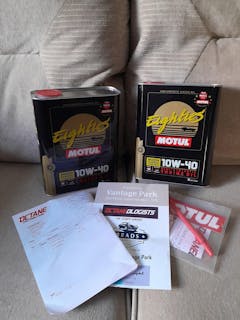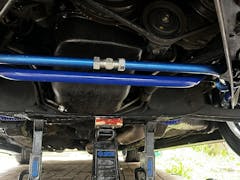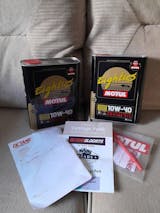Hydropneumatic suspension is a type of motor vehicle suspension system, designed by Paul Magès, invented by Citroën, and fitted to Citroën cars, as well as being used under licence by other car manufacturers, notably Rolls-Royce (Silver Shadow), Maserati (Quattroporte II) and Peugeot. It was also used on Berliet trucks and has more recently been used on Mercedes-Benz cars, where it is known as Active Body Control. The Toyota Soarer UZZ32 "Limited" was fitted with a fully integrated four-wheel steering and a complex, computer-controlled hydraulic Toyota Active Control Suspension in 1991. Similar systems are also widely used on modern tanks and other large military vehicles. The suspension was referred to as oléopneumatique in early literature, pointing to oil and air as its main components.
The purpose of this system is to provide a sensitive, dynamic and high-capacity suspension that offers superior ride quality on a variety of surfaces.
A hydropneumatic system combines the advantages of two technological principles:
- Hydraulic systems use torque multiplication in an easy way, independent of the distance between the input and output, without the need for mechanical gears or levers.
- Pneumatic systems are based on the fact that gas is compressible, so equipment is less subject to shock damage.
- Gas absorbs excessive force, whereas liquid in hydraulics directly transfers force
The suspension system usually features both self-levelling and driver-variable ride height, to provide extra clearance in rough terrain.
The principles illustrated by the successful use of hydropneumatic suspension are now used in a broad range of applications, such as aircraft oleo struts and gas filled automobile shock absorbers, first patented in the U.S. in 1934 by Cleveland Pneumatic Tool Co. This type of suspension for automobiles was inspired by the pneumatic suspension used for aircraft landing gear, which was also partly filled with oil for lubrication and to prevent gas leakage, as patented in 1933 by the same company. Other modifications followed, with design changes such as the 1960 "Double stage oleo-pneumatic shock absorber" patented by Peter Fullam John and Stephan Gyurik.







